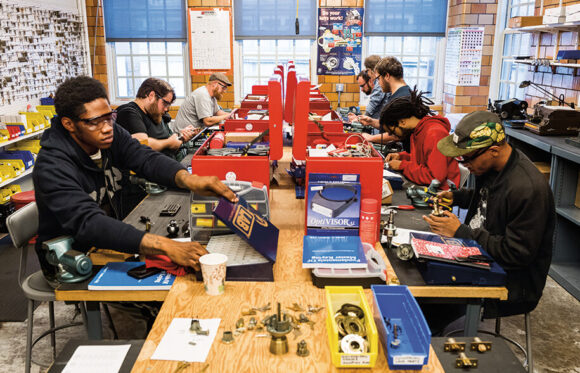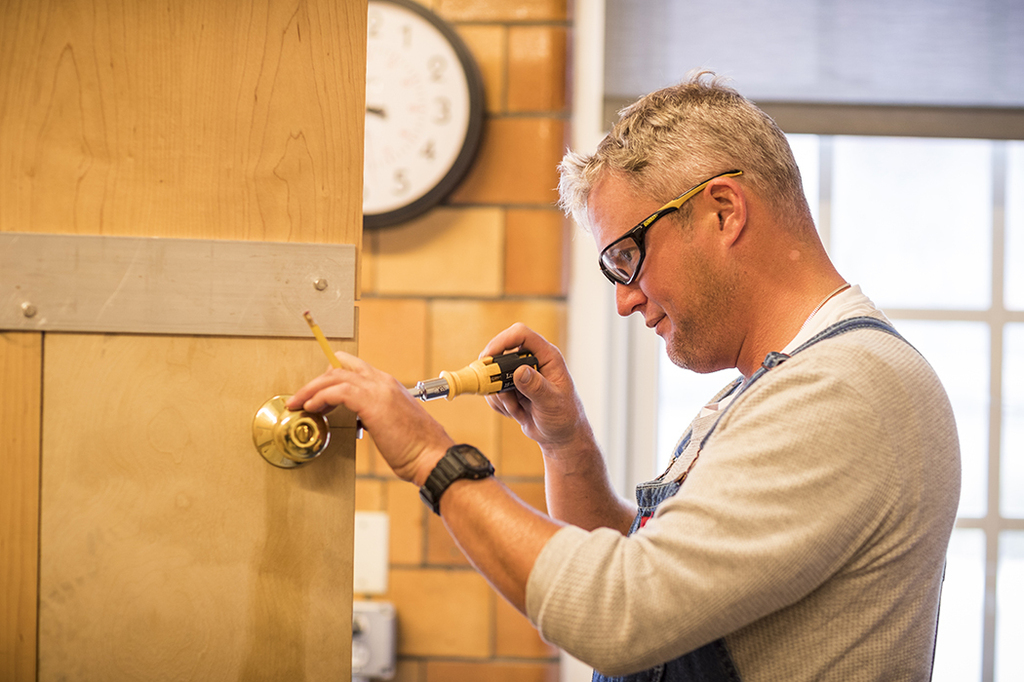The Future of Locksmithing: It’s All About Security

Categories
Locksmithing & Security TechnologyLike most ancient professions, locksmithing is often underestimated or oversimplified in today’s society of high-tech gadgetry. However, locks, and the ability to work with them, remain just as important to security as they have always been. Consider the image of the lock. We use it to convey a sense of comfort and safety. If we say something is “locked down,” or “under lock and key,” we know it’s not going anywhere.
Locks will always be essential in civilized society, and so the locksmith must adapt with the times. The role of the locksmith is not just to open doors, but to maintain the security of entire buildings. They must be able to learn and implement new technologies in locksmithing, in addition to mastering traditional techniques. So, much like a lock itself, the profession of locksmithing is complex and has many moving parts.



A Brief History of Locksmithing
Locksmithing is roughly 4,000 years old, with the first locks dating back to 704 BC. The earliest locks used wooden keys, which would move a series of pins when inserted into the lock. The Industrial Revolution introduced the ability to forge metal locks, and locksmithing quickly became a highly valued profession. At the time, locksmiths didn’t just make keys and locks; they were also skilled metalsmiths who could repair guns and tools, make screws and fasteners, and work with a variety of materials. As their knowledge with metals improved, locksmiths began creating locks that were beautifully ornate and complex. Many locksmiths specialized in designing new types of locks for nobility or other high-profile clients.
Locksmithing in The 21st Century
Today, locksmithing is less about forging metal and more about using technology to enhance security systems. Locksmiths can work on their own, out of their workshop, or as part of a security agency. They can specialize in a range of services, from replicating keys and making repairs, to building custom safes, even working as independent security consultants. Electronic locks and digital security systems have added a new layer to the profession of locksmithing: today’s locksmith must know how to integrate traditional lock design with an understanding of electronic lock technology. However, despite the existence of so-called “keyless” entry systems and electronic-activated locks—which almost always have a mechanical override anyway—there is still a high demand for the trusty lock and key.
Locksmithing as a Career
The initial surge of technology in the locksmithing industry created a bit of a temporary lull as traditional locksmithing gave way to more modern practices. Now, the industry is evolving into one that melds conventional lock-making skills with an understanding of electronic circuitry. Security is always in high demand, and if locksmiths can learn new skills and technology, their services will be too.
The outlook for locksmithing is positive. In 2008, BLS projected that the career would grow by 12% by 2018. Traditionally trained locksmiths will retire over the next several years, making way for new graduates trained in state-of-the-art security technology. The industries with the highest demand for locksmiths are schools, municipal buildings, and hospitals. Data centers and high-tech firms also have a need for increased security and electronic access control. Entry-level locksmiths can improve their marketability by getting additional specialized training in electronic security systems.
Of course, then, the key (no pun intended) to becoming a locksmith is to get a well-rounded, yet focused, education. Locksmithing requires a great deal of mechanical mastery, which can only be taught through hands-on education. Look for programs that offer benchwork in traditional locksmithing along with an understanding of electronic access control systems. You can learn how to become a locksmith by exploring NBSS’s accredited Locksmithing & Security Technology program, or join us for a tour of the School.


